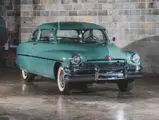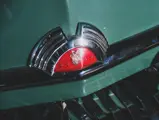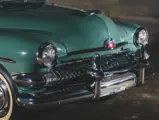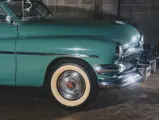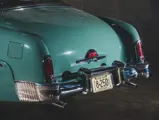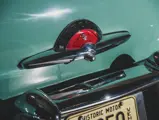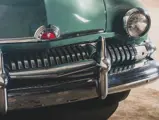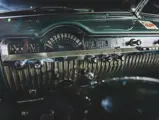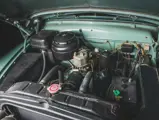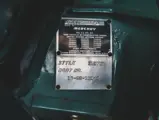No doubt the cameo role of a black 1949 Mercury club coupe in the James Dean movie Rebel Without a Cause was responsible for the vogue that befell the 1949–1951 models. The basic form became a favorite of customizers, as its rounded lines lent themselves to the removal of trim and the “frenching” of lights into the fenders. In some locales, custom Mercs seemed to outnumber stock examples. Every boy who was a teen in the mid-1950s wanted one.
But whether custom or stock, this generation of Ford’s “middle marque” is still known as the “James Dean Mercury.” In fact, this car is a card-carrying member of the club. On the dashboard it bears a plaque from the 22nd annual James Dean Run held in September 2001 in Fairmount, Indiana. Fairmount is just 15 miles from Dean’s birthplace in Marion, and hosts a three-day festival every year.
The car is a rare nearly original survivor. The odometer shows barely 29,000 miles, and the interior boasts original cloth upholstery under clear plastic seat covers. It was purchased new by a gentleman in northern Illinois, who kept it for 40 years. Toward the end of his ownership, he had it repainted in Sheffield Green, and the stainless trim restored. After his passing, the car was purchased by Clyde King of St. Peter, Illinois, from whom Fred Guyton acquired it in 2003.
A St. Louis-built car, it is equipped with radio, heater, electric clock, and overdrive, as well as wide whitewall tires on black wheels with full wheel covers. The engine compartment is virtually original, its condition vouching for the very low mileage.
There were 142,168 club coupes built for 1951. As a stopgap style measure, a number were built with vinyl or canvas roof covering and dubbed “Monterey,” a stratagem intended to compensate for the lack of a true pillar-less hardtop coupe. In retrospect, those dressed-up cars look very much overdone, spoiling the lines of E.T. Gregorie’s iconic design.
This car is the real deal, presented as Gregorie designed it, Mercury built it, and very much like James Dean drove.




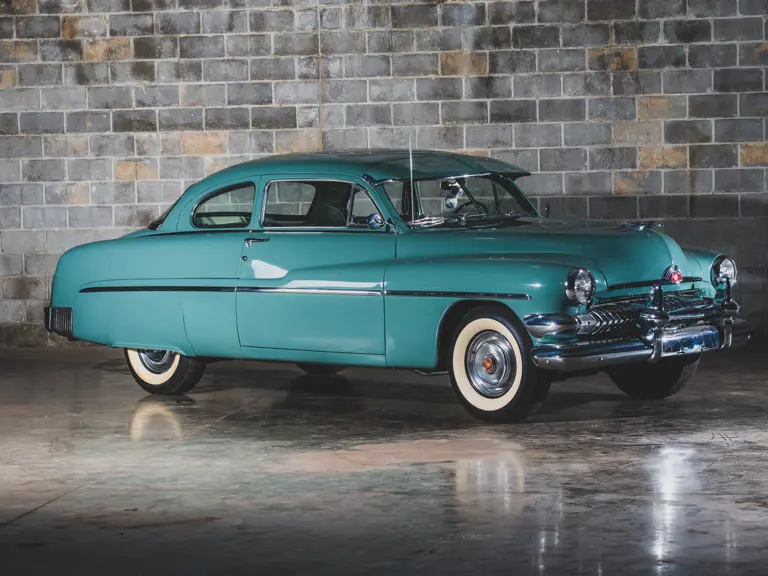
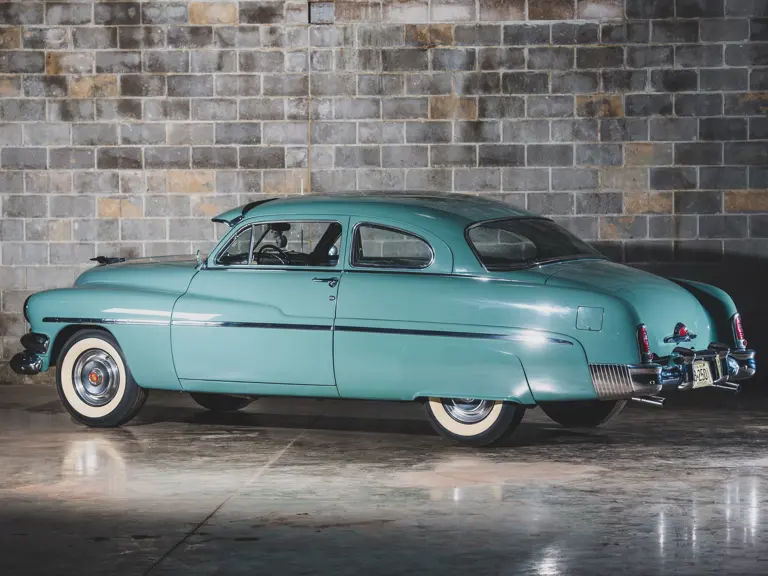
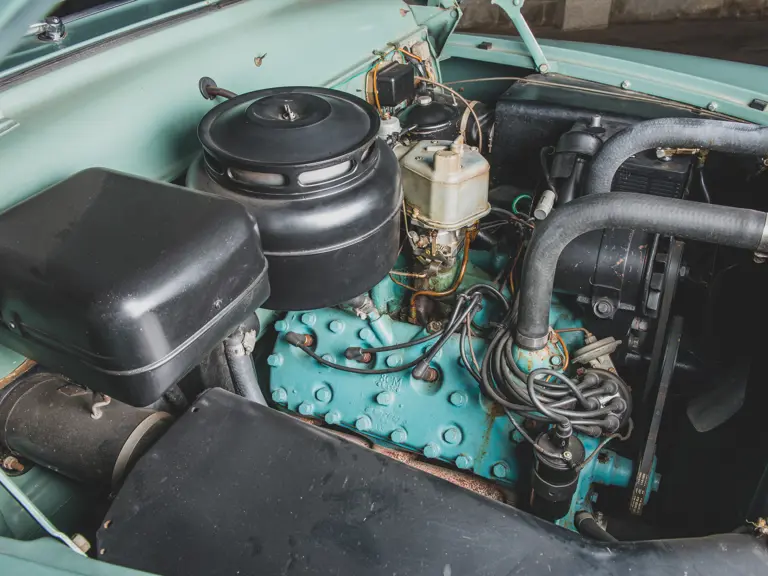



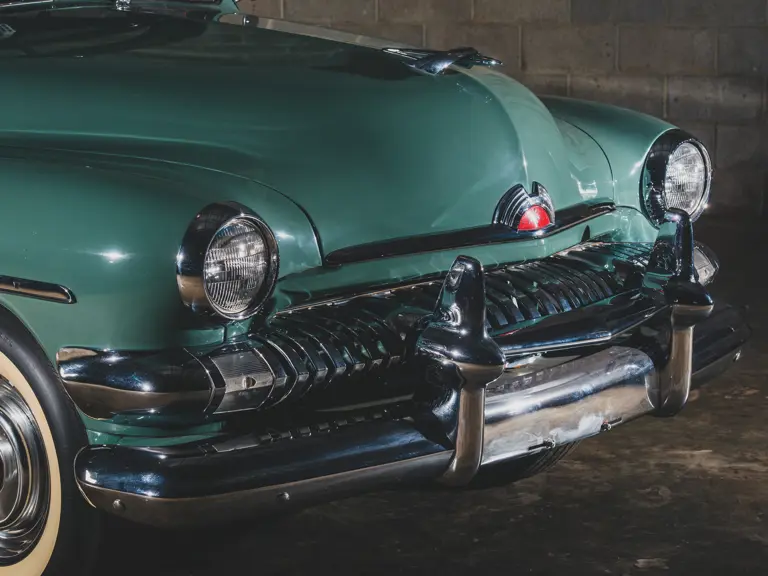
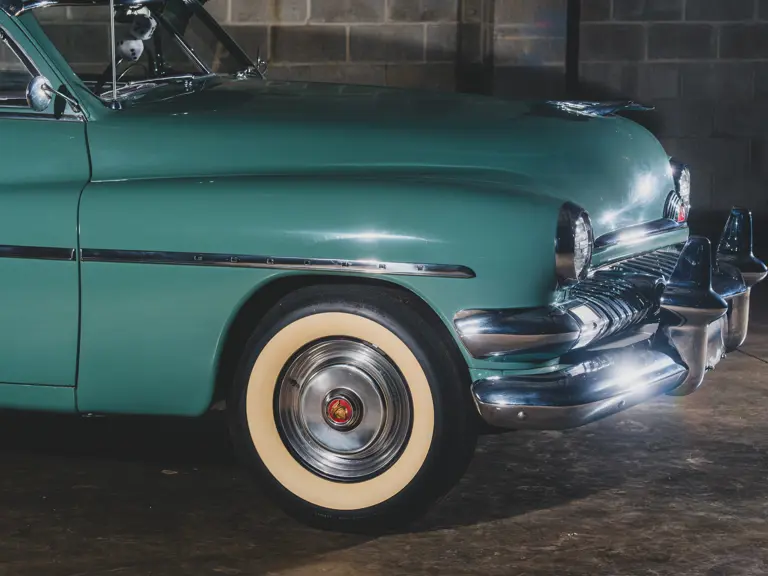

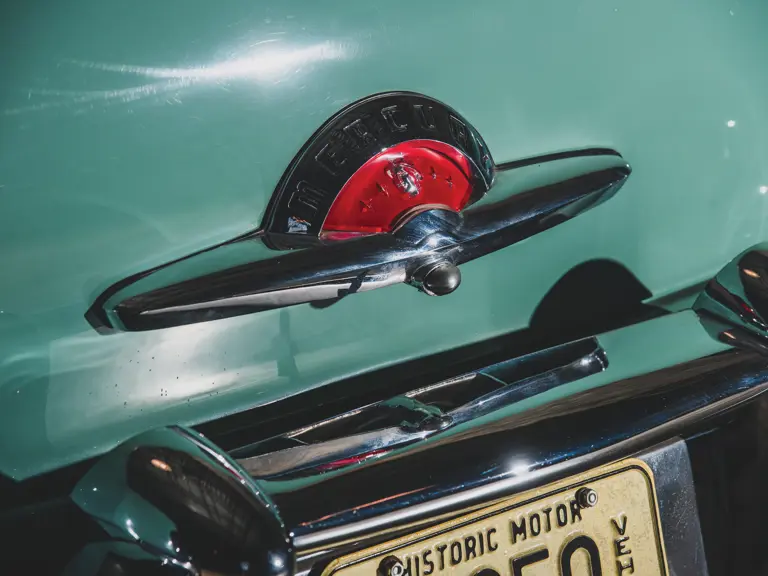
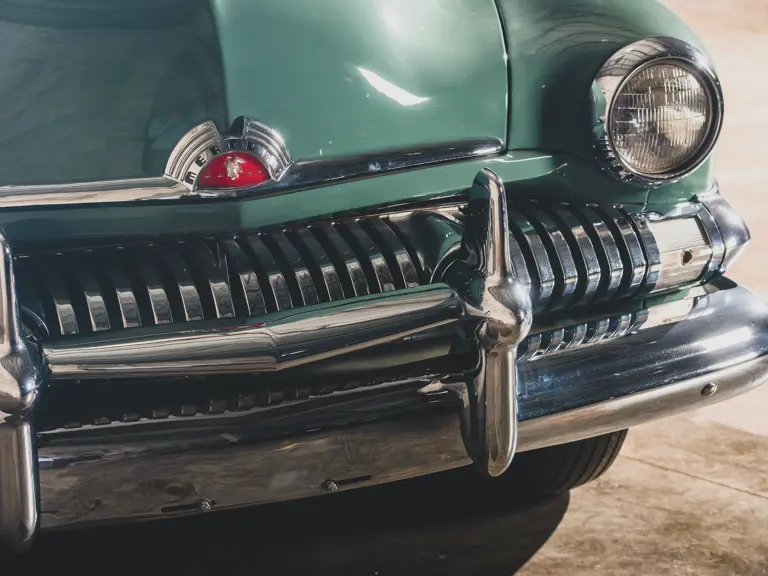
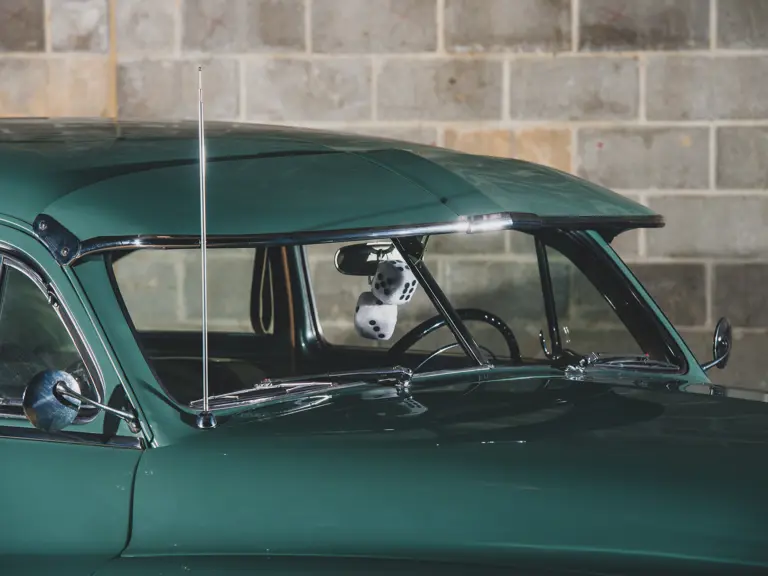
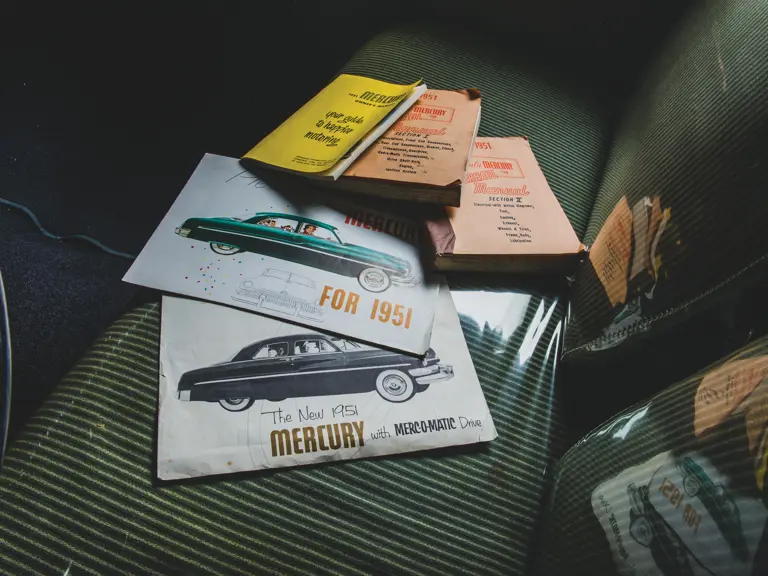
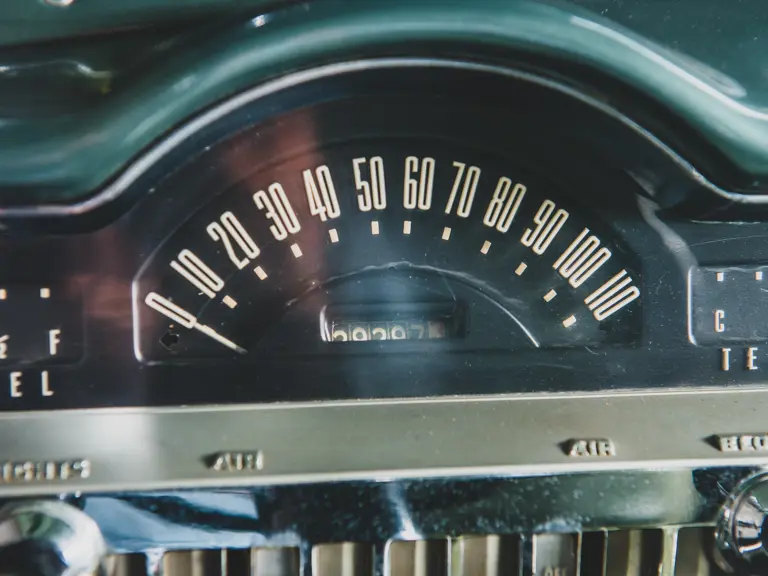



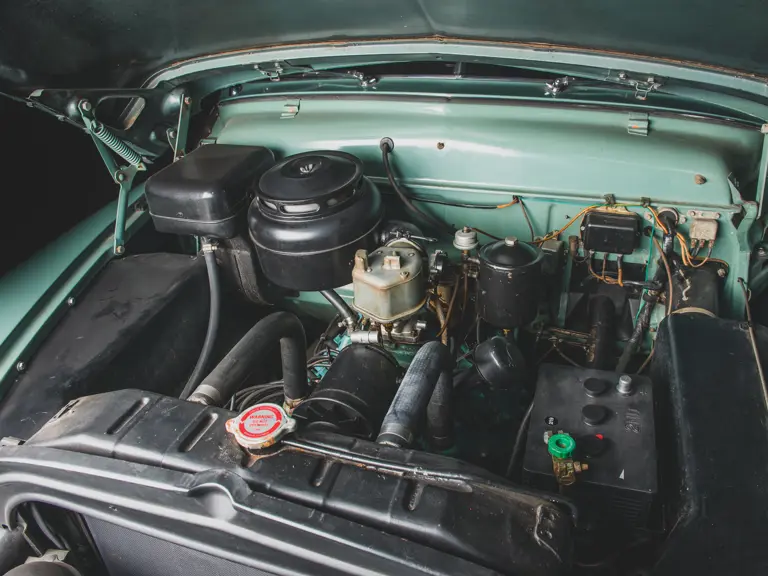
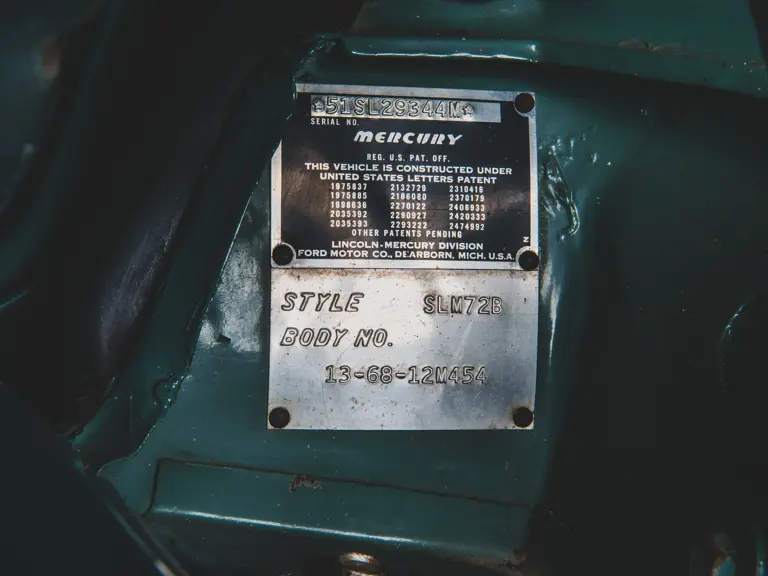
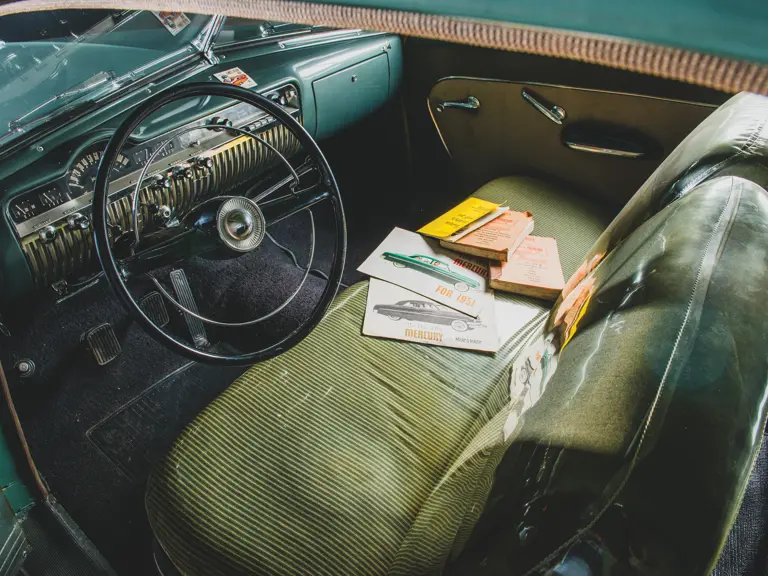
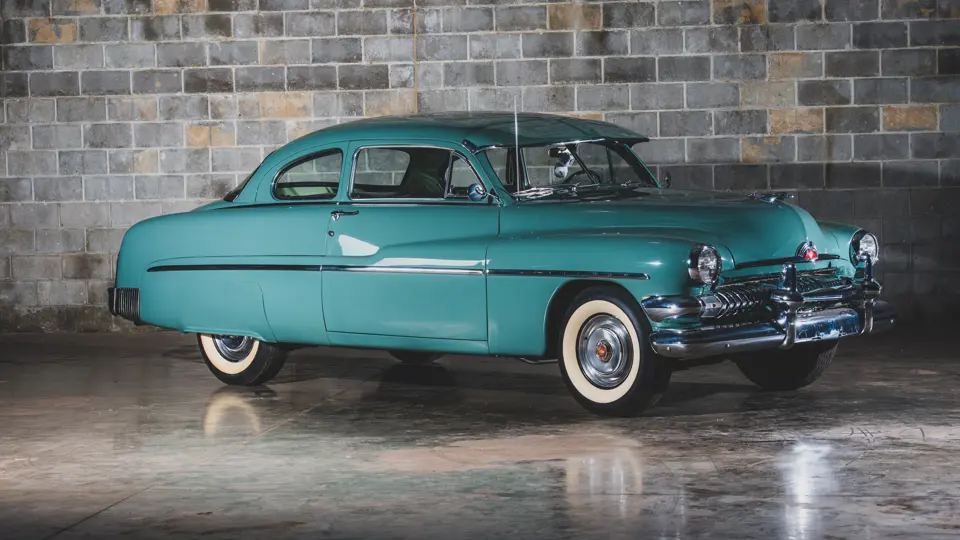
 | St. Louis, Missouri
| St. Louis, Missouri



